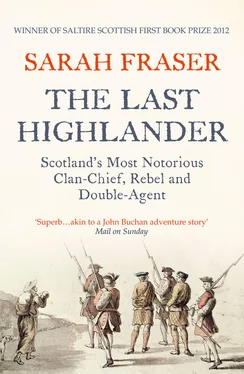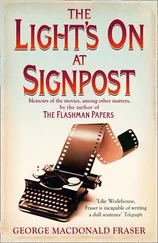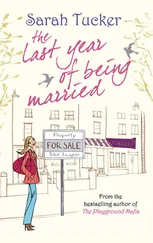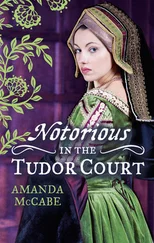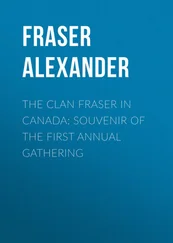It had taken nearly two years, from Argyll’s first letter to his last, for the Earl to be able to write excitedly to Simon Fraser’s friends that he was brandishing ‘Beaufort’s (now I may say Lord Lovat’s) pardon’ in his hands. Simon was free, and now officially the 11th Lord Lovat. As the chief, MacShimidh Mor, Lovat could return home and relieve his people’s sufferings.
In Europe, three deaths threatened further political instability and affected Lovat’s plans. First, the British Protestant succession failed again when, in July 1700, the surviving Protestant Stuart child of Princess Anne and the Prince of Denmark, the eleven-year-old Duke of Gloucester, died.
The ramifications of Gloucester’s death spread north to Scotland, and far south to the Courts of Versailles and St Germains when, the following summer, Mary and Anne Stuart’s father, James II, died in exile. With his eye on Spain and the Holy Roman Empire, Louis XIV no longer had reason to appease William. Happy to aggravate political tensions within Britain, he proclaimed that James II’s son would be ‘King James III of England and VIII of Scotland’ on the death of Princess Anne. Anne had not even succeeded yet. The third death was the passing of Carlos II, King of Spain and Holy Roman Emperor.
Meanwhile, King William’s grasp on Scotland was slipping. The whole country was breaking down after five years of failing harvests and a famine that had killed up to fifteen per cent of the Scottish population. Politicians racked their brains for schemes to stimulate life in the economic mud in which Scotland drowned. Their suffering was proof of God’s displeasure at the overturning of the natural order and at the anointed Stuart ruler having been driven away. The massacre at Glencoe, the quartering of government troops on starving people, and a series of economic disasters all blighted his rule.
The most recent crisis went back to 1696, when William Paterson, Scotsman and founder of the Bank of England, had suggested to his fellow Scots merchants and landowners that they should start a foreign trading company to stimulate their weak economy. Scottish businessmen set up ‘The Company of Scotland’ to trade with Africa and the Indies. Scots flocked to invest and sank a quarter of the nation’s tiny liquid capital into the venture. Inverness merchants contributed £3,000. They almost beggared the town on the gamble of massive returns. When the profits rolled in, it was said, investors’ wives and children would rush to demand luxuries from local merchants. The economy would boom. This was Paterson’s vision for Scotland.
The Scots plumped on Darien, on the Isthmus of Panama, as the cradle of their hopes, christening it ‘New Caledonia’. The Spanish complained angrily and claimed the territory – close to Spain’s silver mines – for themselves. William III agreed to withdraw English support for New Caledonia on one condition: that Spain refuse Louis XIV’s demand to make his grandson King of Spain and Holy Roman Emperor.
Spain agreed. The English Parliament pressured English merchants to withdraw all their capital from the Darien Venture. The English Navy, rather than protecting its sister nation’s merchant shipping, harried and captured it. To the Scots, William was putting his English subjects’ interests over those of Scotland. The collapse of the Darien Venture induced national economic breakdown. The Scots went into shock.
The whole nation seized on Darien and the colony at New Caledonia as the image of Scotland’s impoverished world standing. The Lord Advocate – the most senior lawyer in Scotland – Sir James Stewart, tried to impress on Carstares the level of grief and despair felt in the kingdom William had never once bothered to visit. ‘Disasters increase, and the weakness of the government is more and more discovered … Was ever a people more unhappy?’ The Scots asked themselves what they gained from the Union of Crowns. Independence looked like a solution to the succession and economic crises.
Sir James Stewart identified three groups fighting to dominate the Scottish Parliament: the Jacobites, the ‘Malcontents’, and the ‘Williamites’. The Jacobites wanted to ‘break the army … [so] that, when the King dies, and neither the Princess Anne nor he having any children, they may the easier embroil the nation, and do their own business’. That is, to restore the Stuarts from France. ‘The Malcontents that are not Jacobites,’ he explained, were aggressive place-seekers. They just wanted to disrupt proceedings in Parliament and disrupt government in Scotland, to force the King to promote them to power. However, ‘the Williamites … I think, must be more numerous than the other two. Their aim solely is the peace and security of the government and the good of the country, by an industrious pursuit of honourable and profitable trade …’ This last comment was wishful nonsense to make the King feel better. William’s credibility in North Britain was disintegrating.
Simon, Lord Lovat, moved into Castle Dounie and began collecting such rents as he decently could from starving clansmen and semi-bankrupt lairds. He took debts on himself and let the ordinary tenantry off their rents for that year where he saw they had nothing.
He was not left for long to try and sort out his estates. Goaded by Lovat’s reappearance, the Murrays hurtled back to the law courts. This time they forced ‘Sister Lovat’ there with them. They petitioned the Court of Session to summon ‘Captain Fraser’ (they would not call him Lord Lovat) – to answer the private charge of ‘rapt and hamesucken’. Relative to rape, rapt was a watered-down assault. Lovat explained it to one of the King’s advisers. ‘They do not [charge] me for ravishment, but for carrying her by violence from place to place.’ They hound me ‘as if I had murdered the King!’ Lovat complained. Hamesucken, loosely speaking, was socking (sucken) it to someone in their own home (hame). A crime against property rights, it was a capital crime, unlike rapt. Hamesucken also covered ‘the ravishing of persons of rank in houses of consequence’. They had to charge Lovat with both to get a death penalty.
Argyll told the King that the court summoning Lovat was ‘not composed as it ought to be’. While the Lord Advocate warned Argyll if Lovat ‘is found tomorrow in Edinburgh, I would not give a sixpence for his head’. Years of Tullibardine infiltration of the law courts favoured the Murrays securing the clan chief’s conviction. There were ‘such wicked and abandoned judges’, Lovat wrote, ‘the innocence of an angel of light would be to no avail!’ And Lovat was no angel. Lovat did not appear and on 17 February 1701 was found guilty in absentia. He was outlawed yet again.
Argyll advised Lovat to forget Edinburgh and the Scottish legal system and come south, persuade the King to extend his pardon to cover the ‘private charge’ and fulfil William’s intention to pardon Lovat. He must demonstrate that the Atholl Murrays subverted the King’s wishes.
In the summer of 1701, William raised Argyll to a dukedom, a great sign of royal favour. Lovat, an Argyll man, waited for his patronage. He wanted Argyll to place him somewhere in the Scottish government. There he could do the King’s business and his own.
Roderick Mackenzie, Lord Prestonhall, on the bench of the Court of Session, was a Scottish Law Lord, the brother of Sir George, now Viscount Tarbat – and therefore the uncle of the young Amelia Fraser presently living at Blair Castle. Tarbat and Sir Roderick had voted for Tullibardine to declare Lovat’s forced marriage with the dowager Lady Lovat null and void, and also to condemn Lovat to death because of the ‘rapt and hamesucken’. Now Sir Roderick presented the Mackenzies’ bill. He offered his son, Alexander Mackenzie, as husband to young Amelia, now rising thirteen and of marriageable age. On his ward’s behalf, Tullibardine thought about it, and accepted. It might help reduce the Frasers to obedience. It meant that Simon Fraser could never marry her and it brought the Mackenzies back on side. Tullibardine was rebuilding his power base. Those wily old Mackenzies could be useful allies.
Читать дальше
